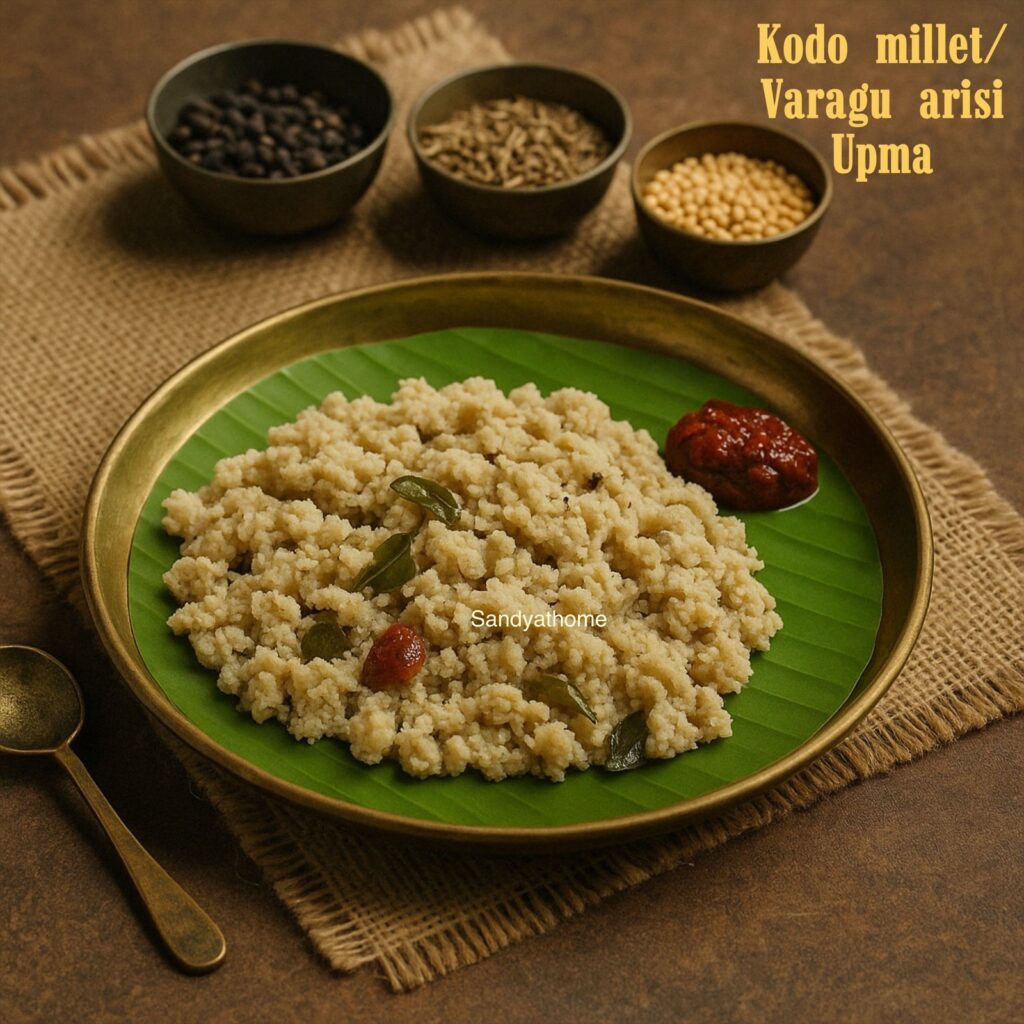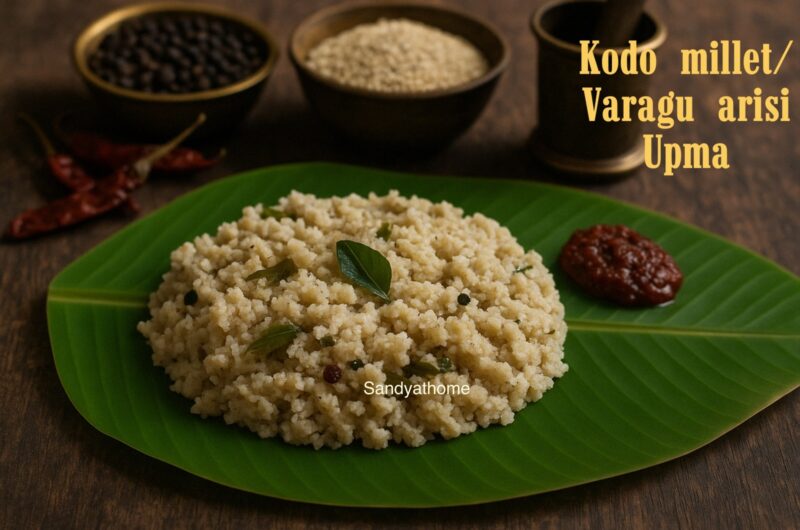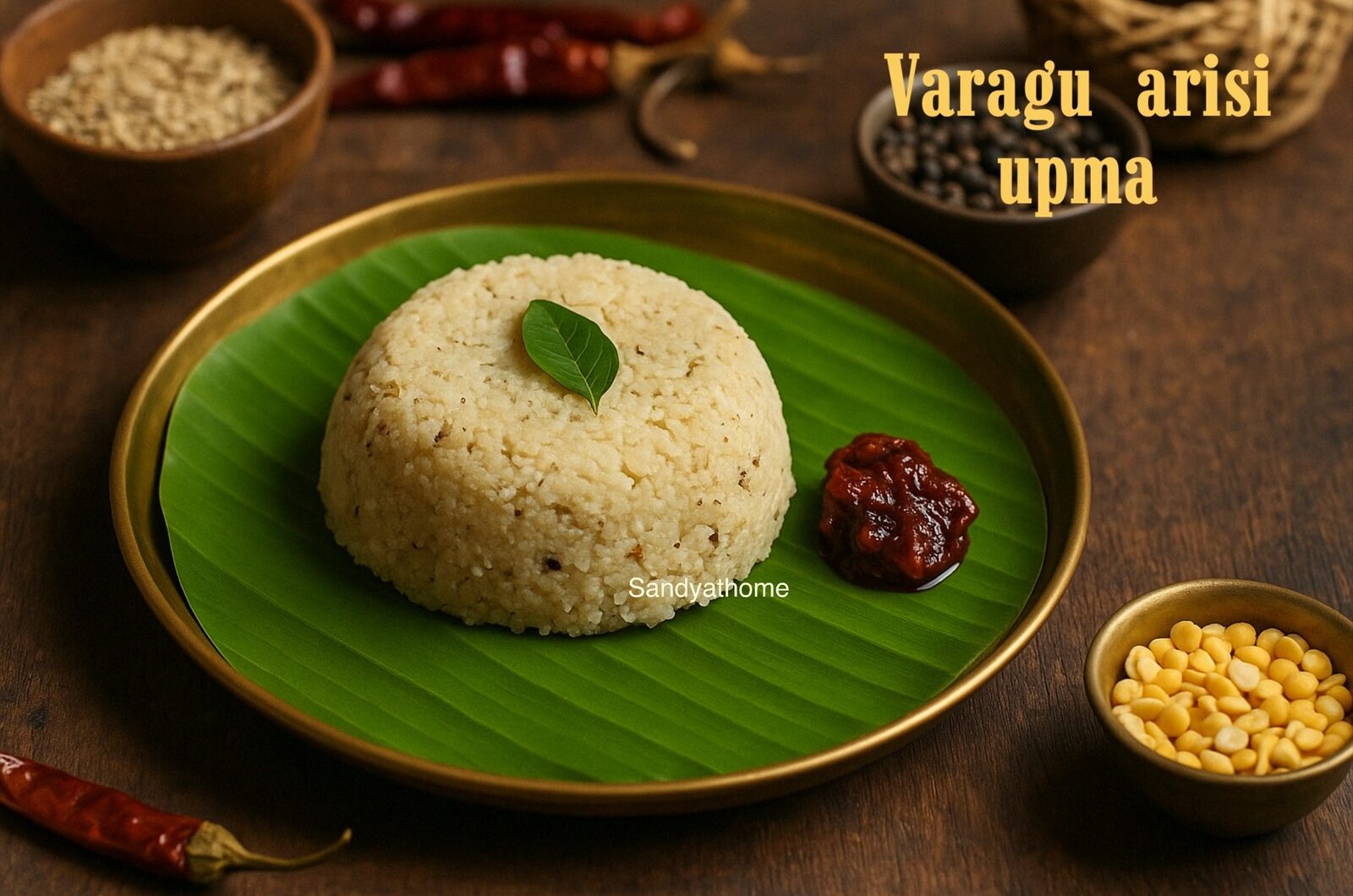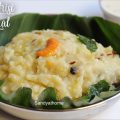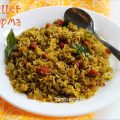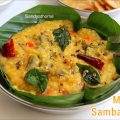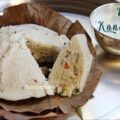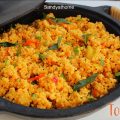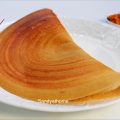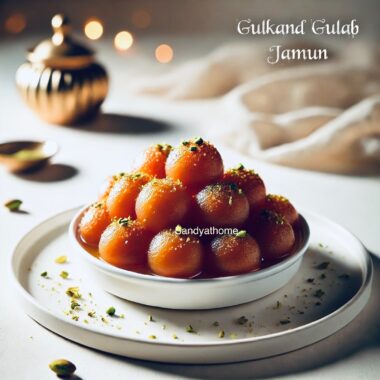“Sometimes the simplest things are the most comforting—and the most powerful in tradition.”
This morning, I stood in my kitchen, staring at the little jar of kodo millet tucked away in the back of the pantry. It reminded me of something Paati used to say, “Varagu saapta udambukku velai korayum ma!” (“When you eat varagu, your body needs less effort to stay healthy.”) That was enough for me to bring out the pot and start a rustic, soulful dish—Kodo Millet Arisi Upma.
This is not your regular upma. No onions. No vegetables. Just the basics: kodo millet, a sprinkle of toor dal, whole cumin seeds, peppercorns, and a drizzle of coconut oil. That’s it. And yet, every spoon tasted like it had centuries of wisdom simmered into it.
Why I Made This Today
I’ve been reading a lot about Sangam-age food lately and trying to bring those forgotten recipes to life—not with modern tweaks, but the way our ancestors might have made them. This arisi upma, with no “extras,” is a perfect example. Just whole ingredients, earthy flavors, and mindful eating.
I served it with a simple chutney and a bit of garlic thokku—that kick of spice was the only modern touch I allowed myself.
A PEEK INTO THE PAST
“Food is memory. And sometimes, it’s also archaeology.”
Did you know this humble upma traces its roots back to over 2,000 years ago, during the Sangam period (roughly 300 BCE to 300 CE)? Back then, the landscape of Tamilakam was divided into five regions—Kurunji, Palai, Mullai, Marutham, and Neithal. In the Kurunji and Palai zones, where farming was tough and rainfall was scarce, millets like varagu (kodo millet) were a dietary staple.
– Varagu (Kodo Millet): Ancient, drought-resistant, and beloved for its easy digestion.
– Toor Dal (Thuvaram Paruppu): A protein source used in daily cooking—simple gruels, porridges, and mixed rice dishes.
– Pepper & Cumin: Both native to South India and essential in Ayurvedic and Siddha medicine. Pepper was so valuable, it was called “black gold” by Roman traders.
– Coconut Oil: A staple in the southern coastal kitchens of the Chola era, known for both flavor and health benefits.
So yes—what I cooked today is not just breakfast. It’s history.
Cooking Notes
This upma is as humble as it is hearty.
Other recipes that might interest you:
STEP BY STEP DIrections to make Kodo Millet Arisi Upma
- First, wash the millet and toor dal together and spread it out under a fan to dry.
- Then coarsely grind millet, toor dal with cumin and peppercorns—not too fine, just enough for texture.
- In a pot, heat coconut oil, add dry red chilli and curry leaves when aromatic add in the 4 cups of water and salt.
- Once the water began to boil, I added the coarse mixture and let it cook on low to medium flame for about 25–30 minutes, checking occasionally.
- It fluffed up beautifully—ready to be served warm and simple.
Side Note on Garlic Thokku:
While the garlic thokku I served on the side is my modern addition, it still stays close to the spirit of ancient Tamil cooking. Garlic (poondu) was revered for its healing properties in the Sangam period, though thokku as a preserved pickle came much later. So this combo is a blend of then and now—just like my kitchen!
Serve with chutney, garlic thokku, or just a spoon of curd.
Why You Should Try It
If you’re looking to eat healthier, reconnect with your roots, or just try something soothing, this is it. It’s:
– Gluten-free
– Gentle on the stomach
– Packed with fiber
– Historically rich!
“In every ancient grain, there is a modern lesson: slow down, simplify, nourish.”
Let’s not let these beautiful recipes fade away. If you try this Kodo Millet Arisi Upma, tag me or comment below—I’d love to hear how it turned out!
Until next time,
– Sandy
